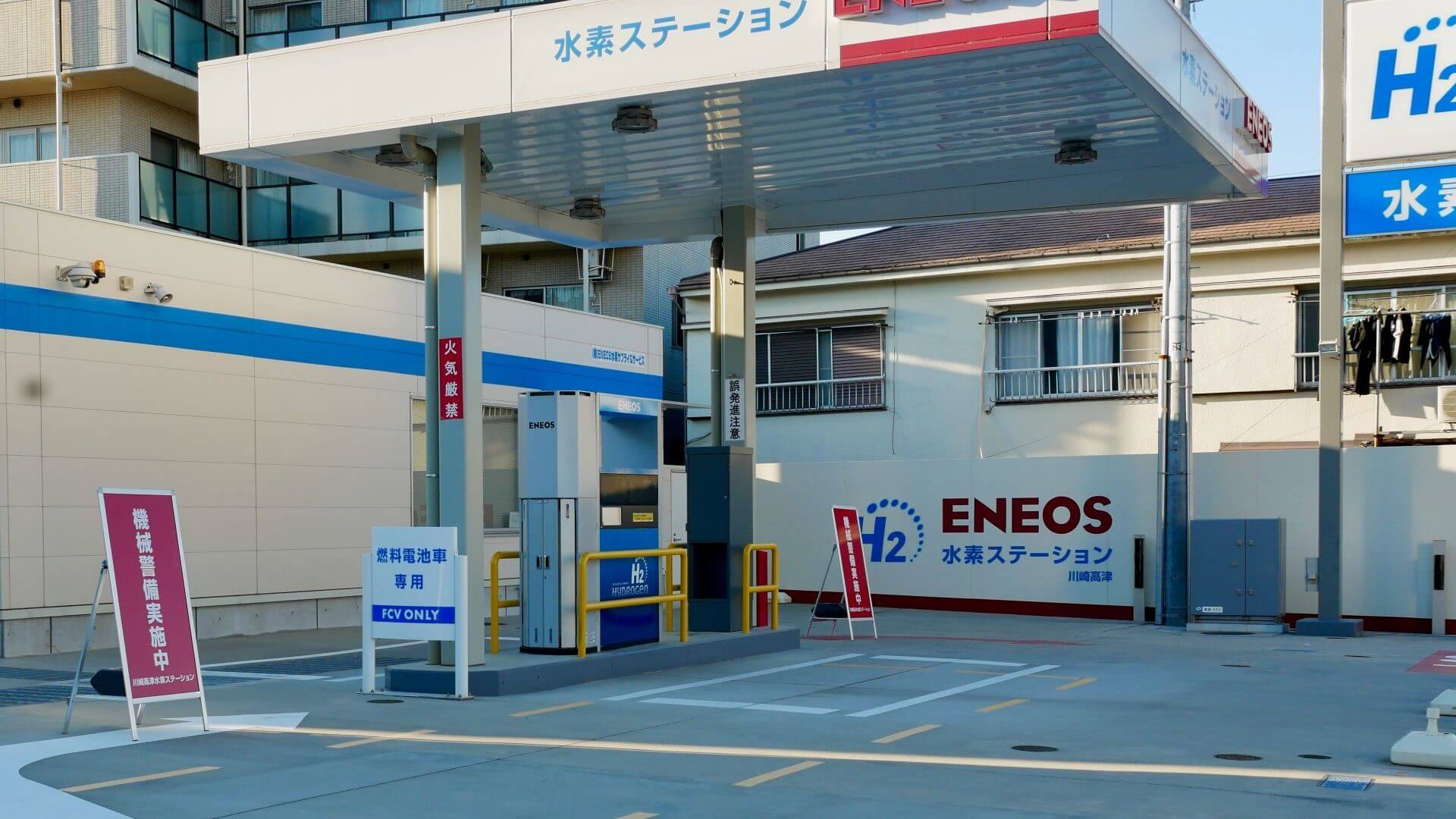UPDATED 1 Sept: The EI library in London is temporarily closed to the public, as a precautionary measure in light of the ongoing COVID-19 situation. The Knowledge Service will still be answering email queries via email , or via live chats during working hours (09:15-17:00 GMT). Our e-library is always open for members here: eLibrary , for full-text access to over 200 e-books and millions of articles. Thank you for your patience.
New Energy World™
New Energy World™ embraces the whole energy industry as it connects and converges to address the decarbonisation challenge. It covers progress being made across the industry, from the dynamics under way to reduce emissions in oil and gas, through improvements to the efficiency of energy conversion and use, to cutting-edge initiatives in renewable and low-carbon technologies.
Japan puzzles over hydrogen strategy
20/9/2023
8 min read
Feature
Japan created the world’s first hydrogen energy strategy in 2017. Following heavy criticism, the government revised the strategy earlier this year. However, John Boyd reports that the new plan is also being challenged due to its focus on blue, and even grey, hydrogen production.
In 2017, the Japanese government became the first in the world to set out a hydrogen energy strategy. But the plan came under widespread criticism, particularly for its lack of support for renewable-based green hydrogen, and for falling way short of the numbers it set for the take-up of fuel cells and fuel cell vehicles (FCVs).
In June this year, Japan revised its hydrogen strategy. Yet despite a government declaration to realise a carbon-neutral society by 2050, the updated strategy continues to emphasise the use of grey and blue hydrogen, which does little to reduce carbon emissions, say the critics.
The original Basic Hydrogen Strategy aimed to utilise hydrogen as an important, versatile energy source, improve the country’s energy diversification and security, and help reduce carbon emissions – at least in the long term.
The plan included developing domestic and especially overseas production of hydrogen; accelerating the use of fuel cells and FCVs already being manufactured; building support infrastructure, such as the storage and transport of hydrogen, and hydrogen refuelling stations; and promoting the use of hydrogen as an energy source in industry. This wide-ranging strategy likely influenced governments abroad, for in the years following the initiative, the UK, European Union (EU), US, and Australia announced their own plans to develop hydrogen as an energy source.
Japan’s initiative also gave rise to the concept of a ‘hydrogen society’. The idea, promoted by the Ministry of Economy, Trade and Industry (METI) and other government agencies, reasoned that the wide use of hydrogen in Japan would help transform the country’s energy landscape and the lives of its citizens. In October 2020, the concept gained further importance when the then Prime Minister Yoshihide Suga announced the goal of realising a carbon-neutral society by 2050, in part through the creation of a hydrogen society.
To help achieve Suga’s ambitious goal, METI drafted a Green Growth Strategy in 2020 to speed up structural changes, particularly in the energy, transport and manufacturing industries sectors, to reduce carbon emissions.
Hydrogen strategy criticised
Yet despite this new emphasis on achieving a net zero economy in one generation, critics pointed out that the Basic Hydrogen Strategy prioritised the use of fossil fuels for the production of hydrogen.
Ariel Cohen, a non-resident Senior Fellow at the Atlantic Council Eurasia, remarked whilst writing in Forbes Magazine six years after Japan announced the strategy, that despite initial good press, the programme was unable to overcome the limitations of a technology still being tested. He called out hydrogen’s poor scalability, given its low energy per unit volume, and the challenges of transporting a fuel that can be highly flammable and explosive, as hurdles too high to cross.
‘Most of the hydrogen produced or utilised was so-called “grey hydrogen”, hydrogen in which the fuel used was not from renewable energy sources,’ he said.
It is as if the government is in two minds when it comes to its hydrogen and green energy strategies – the high cost of green hydrogen being a major reason for the dilemma. As noted by the International Energy Agency: ‘A key barrier for low-carbon hydrogen is the cost gap with hydrogen from unabated fossil fuels.’ And Japan, after shutting down many of its nuclear plants in the aftermath of the Fukushima nuclear plant disaster in 2011, has turned to coal, LPG and natural gas to fill the energy gap – and proposes raising the share of nuclear back to 22–24% by 2030.
Energy Tracker Asia, which promotes the use of renewables in the region, noted: ‘In 2021, in collaboration with Australia, Japan launched a joint project to turn brown coal into hydrogen, otherwise known as grey hydrogen – the dirtiest type. Following the hydrogen’s production in Australia, it would be shipped to Japan without carbon capture. Both countries hinted at capturing carbon emissions produced on-site but were light on details….’
The harshest criticism of the policy came from the Tokyo-based Renewable Energy Institute, which published an in-depth report in September 2022 entitled Re-examining Japan’s Hydrogen Strategy: Moving beyond the ‘hydrogen society’ fantasy.
Besides calling out the idea of a ‘hydrogen society’ a fantasy, the report described the strategy as ‘misguided, both in terms of what hydrogen is used for and how it is produced’. It went on to say that given the low take-up of both residential (Ene-Farm) fuel cells to generate household electricity and heat, and of FCVs, were so far short of government targets, this part of the strategy, at least, was ‘a complete failure’.

The Suiso Frontier is the world’s first liquid hydrogen carrier ship (‘suiso’ is the Japanese word for hydrogen) – built by Kawasaki Heavy Industries, it made its first trip in December 2021 to Port Hastings, Australia
Photo: Kawasaki Heavy Industries
Revised hydrogen plan
Faced with such criticism and poor results over the past six years, the government acknowledged earlier this year that it was falling behind other countries in the development of hydrogen as an energy source. According to the Japan Science and Technology Agency, the country ‘is noticeably lagging behind major foreign competitors in the hydrogen energy field who are overtaking the country in the deployment of FCVs powered by hydrogen’. As a result, ‘a sense of crisis has driven [METI] and other government agencies to revise this strategy’.
Key points of the revised strategy announced in June are:
- Installing water electrolysis facilities using Japanese equipment to achieve a generating capacity of 15 GW by 2030.
- Increasing sixfold the supply of hydrogen from the current 1.8mn t/y to 10.9mn t/y by 2040, and then (as previously targeted) to 18.1mn tonnes by 2050.
- Designating and supporting nine strategic fields, including fuel cells and electrolysers.
- Raising investments of 15tn yen ($105bn) from the public and private sectors over the next 15 years to fund the programme.
Speaking at a press conference to announce the new plan, senior Japanese government officials outlined how Japan will use all this hydrogen, the emphasis being put on power generation. Hydrogen will be mixed with natural gas to power thermal power stations and burnt as a fuel for the same purpose.
The government is also doubling down on boosting the number of FCVs on the roads by expanding the number of hydrogen filling stations to 320 by 2025, and 1,000 by 2030. In addition, hydrogen will be used to help expand the production of synthetic fuels and ammonia.

A hydrogen filling station preparing to open in Kawasaki – Japan is planning to increase the number of these stations sixfold to 1,000 by 2030
Photo: John Boyd
The criticism continues
Given that the government continues to prioritise using hydrogen to help power thermal plants, it is hardly surprising that supporters of climate change action have been quick to criticise Japan’s new hydrogen policy.
What’s more, this stated use of hydrogen comes after a new green strategy, dubbed Green Transformation (GX) was announced last December under the new Prime Minister Fumio Kishida. With economic growth in mind and the 2050 target of achieving carbon neutrality still a goal, GX supersedes the Green Growth Strategy and aims to transform Japan ‘from an economy, society and industrial structure dependent on fossil fuels to “structures driven by clean energy”’. This $1.1tn 10-year plan also calls for renewables to reach 36–38% of Japan’s energy mix by 2030.
Yet despite the GX plan noting the importance of clean energy and renewables to wean Japanese industry off fossil fuels, the revised hydrogen strategy does not talk about using hydrogen power generation from renewable energy, says Yuko Nishida, Senior Manager covering climate change at the Renewable Energy Institute (REI) in Tokyo. ‘Rather it continues to emphasise the use of grey and blue hydrogen and ammonia for co-firing in coal-fired power plants without a clear plan for CCS [carbon capture and storage].’ This doesn’t help reduce CO2 emissions, she told New Energy World, ‘it only prolongs the use of coal’.
And though the revised plan calls for 15 GW of power to be derived from hydrogen-based water electrolysis by 2030, Toshikazu Ishihara, Senior Research Fellow at REI, says that there is no indication whether it will be produced domestically or abroad, as is most hydrogen used in Japan today. ‘If mostly abroad, then it does little to help Japan’s energy security,’ he notes.
Other issues REI has with the revised strategy include its aim to use hydrogen widely rather than selecting areas where it is difficult to achieve carbon reductions in other ways. Two such ill-conceived areas, according to REI, are its use in FCVs and Ene-Farm fuel cells, given that more practical decarbonisation technologies such as electric vehicles (EVs) and heat pumps are available.
Given that the government continues to prioritise using hydrogen to help power thermal plants, it is hardly surprising that supporters of climate change action have been quick to criticise Japan’s new hydrogen policy.
Government’s point of view
The Japanese government, however, sees the situation differently, according to Tokyo-based consultancy GR Japan. Currently, green hydrogen and even blue hydrogen are not being generated anywhere in any substantial quantities.
‘There is a general government mindset concerning hydrogen – where a period of transition is believed necessary, and time needed for the development of transition technologies,’ says Debbie Warrener, Associate Director at GR Japan. ‘So the thinking goes you start by using grey hydrogen, then ideally move to blue hydrogen, and then to green when it becomes available at a competitive cost.’
And while there is the GX plan, and the 2050 carbon neutral goal is being taken seriously, the Kishida government is more concerned about encouraging economic growth, says Warrener: ‘So you are seeing that given priority over green technologies in the hydrogen strategy.’
As for the criticism that importing most of Japan’s hydrogen does little or nothing for energy security, again, the government has a different view. Policy makers, says Warrener, believe that by building a supply chain with trusted suppliers, and by investing in and creating assets and infrastructure overseas in which Japanese companies are major stakeholders, this is another way to view energy security.
But as REI notes, following the Russian invasion of Ukraine, European countries and the US now have plans to ‘produce large quantities of green hydrogen derived from renewable energy sources’. Whereas Japan’s revised hydrogen strategy hardly differs fundamentally from the 2017 strategy. ‘Unless this course of action is corrected, there is a serious risk that Japan will not only fail to meet its 1.5°C targets,’ says REI, ‘but also that its hydrogen strategy will come to be seen as mere greenwashing.’
